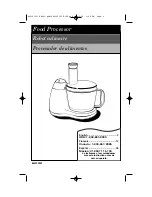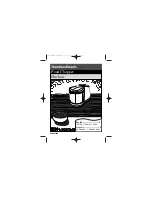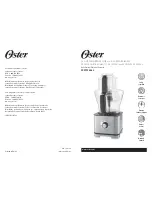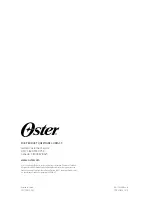
1-20
INTRODUCTION
ORBAN MODEL 8300
Built-in Calibrated Line-up Tones
To facilitate matching the output level of the 8300 to the transmission system that it
is driving, the 8300 contains an adjustable test tone oscillator that produces sine
waves at 8300’s (analog or digital) left, right and composite outputs. The frequency
and modulation level of the line-up tones can be adjusted from the front panel (as
described in Section 3).
The stereo encoder is calibrated so that 100% left or right modulation will provide
100% modulation of the stereo composite signal, including pilot tone but excluding
any SCA subcarriers.
The pilot tone stereo system has an
interleaving
property, which means that the ste-
reo composite modulation is approximately equal to the
higher
of the left or right
channels. Because the pilot tone is phase-synchronous with the stereo subcarrier, the
composite modulation will actually increase about 2.7% when the modulation is
changed from pure single-channel to L+R modulation while the peak audio level is
held constant.
When the 8300’s left/right analog output is switched to
F
LAT
, a de-emphasis filter is
inserted between output of the 8300’s audio processing and its line output. Thus, as
the frequency of the Test Tone is changed, the level at the 8300’s line output will fol-
low the selected de-emphasis curve. In most cases, the pre-emphasis filter in the
driven equipment will undo the effect of the 8300’s internal de-emphasis, so the
8300’s output level should be adjusted such that the tone produces 100% modula-
tion of the transmission link as measured after the link’s pre-emphasis filter. At
100Hz, switching the de-emphasis out or in will have negligible effect on the level
appearing at the 8300’s left and right audio outputs.
You can adjust the frequency and modulation level of the built-in line-up tone. You
can use the front panel, the PC Control software, or the opto-isolated remote con-
trol interface ports to activate the Test Tone.
Built-in Calibrated Bypass Test Mode
A
BYPASS
Test Mode is available to transparently pass line-up tones generated ear-
lier in the system. It will also pass program material, with no gain reduction or pro-
tection against overmodulation. It can transparently pass any line-up tone applied
to its input up to about 130% output modulation, at which point clipping may oc-
cur.
Monitoring on Loudspeakers and Headphones
In live operations, highly processed audio often causes a problem with
the DJ or
presenter’s headphones.
Some talent moving from an analog processing chain
will require a learning period to become accustomed to the voice coloration caused
by “bone-conduction” comb filtering. This is caused by the delayed headphone
sound’s mixing with the live voice sound and introducing notches in the spectrum
that the talent hears as a “hollow” sound when he or she talks. All digital processors
induce this coloration to a greater or lesser extent. Fortunately, it does not cause
Summary of Contents for 8300J
Page 1: ...Operating Manual OPTIMOD FM 8300 Digital Audio Processor Version 2 1 Software...
Page 7: ...Operating Manual OPTIMOD FM 8300 Digital Audio Processor Version 2 1 Software...
Page 24: ......
Page 94: ...2 46 INSTALLATION ORBAN MODEL 8300 This page intentionally left blank...
Page 190: ......
Page 204: ......
Page 246: ......
Page 247: ...OPTIMOD FM DIGITAL TECHNICAL DATA 6 29...
Page 254: ...6 36 TECHNICAL DATA ORBAN MODEL 8300 CPU Module...
Page 260: ...6 42 TECHNICAL DATA ORBAN MODEL 8300 8300 RS232 BOARD PARTS LOCATOR...
Page 262: ...6 44 TECHNICAL DATA ORBAN MODEL 8300 8300 POWER SUPPLY PARTS LOCATOR...
Page 264: ...6 46 TECHNICAL DATA ORBAN MODEL 8300 8300 I O BOARD PARTS LOCATOR...
Page 270: ...6 52 TECHNICAL DATA ORBAN MODEL 8300 DSP BOARD PARTS LOCATOR DRAWING 32170 000 14...
Page 278: ...6 60 TECHNICAL DATA ORBAN MODEL 8300 8300 DISPLAY BOARD PARTS LOCATOR...
Page 279: ...OPTIMOD FM DIGITAL TECHNICAL DATA 6 61 DISPLAY BOARD...
















































